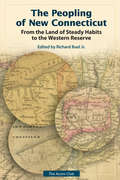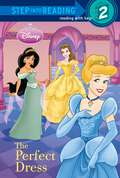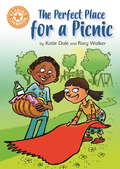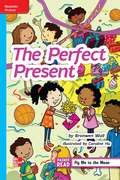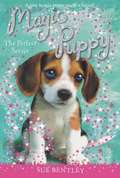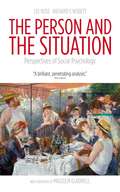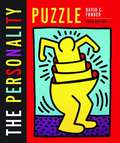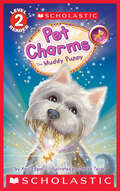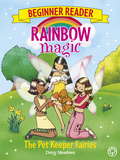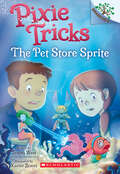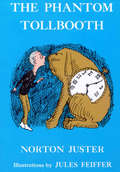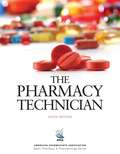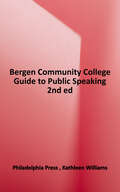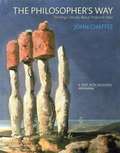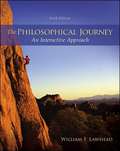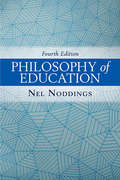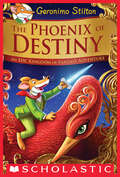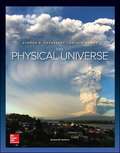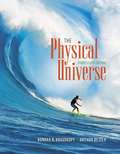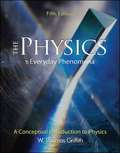- Table View
- List View
The Peopling of New Connecticut: From the Land of Steady Habits to the Western Reserve
by Richard Buel Jr.In 1784 Connecticut laid claim to a territory stretching from Pennsylvania's western border 120 miles along Lake Erie. In 1786 Congress took steps to legitimate this claim, and explicitly recognized it in 1800. The Peopling of New Connecticut presents primary documents that define Connecticut's complex relationship with this territory, known then as the Western Reserve. Using excerpts from previously published official records, diaries, newspapers, periodical journals, pamphlets, and the occasional book that illustrates the process whereby Connecticut transplanted some of its people to a distant, western land, this Acorn Club publication illuminates not only the experience of the emigrants as they journeyed to Ohio and settled in the Western Reserve but also the effect that the emigrants' departure had on the society they left behind. The volume comes with an introduction and commentary about the significance of these republished materials. The Peopling of New Connecticut is a vital, enlightening record of this special chapter in Connecticut's history and provides unique insight into the early westward movement after the Revolutionary War.
The Perfect Dress (Step into Reading)
by RH DisneyWhat makes the perfect dress? Silk or satin, lace or bows, pink or blue? One thing is certain—if a Disney Princess is wearing it, it’s sure to be unforgettable. This new Step 1 reader features all the favorite Disney princesses as they discover their perfect dresses.
The Perfect Gifts (Fountas & Pinnell Classroom, Guided Reading Grade 1)
by Laura Jacobsen Terry ShannonNIMAC-sourced textbook
The Perfect Place for a Picnic: Independent Reading Orange 6 (Reading Champion #542)
by Katie DaleMo and Yaz are in the mood for a picnic. They've packed their trusty red rug and a lovely lunch, but they have no idea what's in store for them! From the start, everything goes wrong and the two friends will have to be creative to find the perfect place for their picnic.Reading Champion offers independent reading books for children to practise and reinforce their developing reading skills.Fantastic, original stories are accompanied by engaging artwork and a reading activity. Each book has been carefully graded so that it can be matched to a child's reading ability, encouraging reading for pleasure.
The Perfect Secret #14
by Andrew Farley Sue Bentley Angela SwanNever in Madison's wildest dreams had she imagined having a magic puppy for a friend! So when Storm, a tiny beagle puppy with a fluffy white muzzle, magically appears, Madison feels like the most special girl in the whole world. Who better to help her discover an amazing surprise in the back yard!
The Person and the Situation: Perspectives of Social Psychology
by Richard E. Nisbett Lee RossHow does the situation we're in influence the way we behave and think? Professors Ross and Nisbett eloquently argue that the context we find ourselves in substantially affects our behavior in this timely reissue of one of social psychology's classic textbooks.
The Personality Puzzle
by David C. FunderThe Personality Puzzle gets students excited about personality psychology, demonstrating that it is relevant to their lives and thus actually fun to explore. Over six editions, author David Funder has established himself as the master of the readable textbook, always conveying the motivations behind psychological inquiry while never skimping on the science.
The Pet Charms #1: The Muddy Puppy (Scholastic Reader, Level 2)
by Amy EdgarAn adorable puppy gives Molly a magic charm bracelet!In this Level 2 reader series, Molly loves animals! In this first book, she helps an adorable puppy who gets stuck outside in a storm. Then the puppy gives her a magic charm bracelet! Now Molly can hear animals talking! She soon finds out that the muddy puppy doesn't have a name or a home. Can Molly help her new friend? Is there a magical surprise for Molly in the end?
The Pet Keeper Fairies: Book 6 (Rainbow Magic Beginner Reader #6)
by Daisy MeadowsLearning to read is fun with the Rainbow Magic Fairies! Developed in conjunction with Early Years reading consultants and based on the most up-to-date educational research, the Rainbow Magic Beginner Readers are the perfect way to introduce your child to the magical world of reading.
The Pet Store Sprite: A Branches Book (Pixie Tricks)
by Tracey WestTracey West's magical adventure series is filled with tricky fairies -- and it's perfect for fans of her New York Times bestselling Dragon Masters series!Pick a book. Grow a Reader!This series is part of Scholastic's early chapter book line, Branches, aimed at newly independent readers. With easy-to-read text, high-interest content, fast-paced plots, and illustrations on every page, these books will boost reading confidence and stamina. Branches books help readers grow!Violet and her fairy friend Sprite have to send more pixies back to the Otherworld! This time, they team up with Violet's cousin, Leon, to stop a water sprite named Aquamarina who loves the drip, drip, drip of leaky faucets. But there's something terribly fishy about Aquamarina's fun and games. Can Violet stop this tricky fairy-and stay out of the deep end?This is an exciting refresh of the popular Pixie Tricks series, with updated text and brand-new art on every page -- perfect for fans of Tracey West's Dragon Masters series!
The Phantom Tollbooth (Collins Modern Classics Ser.)
by Norton Juster Jules FeifferNIMAC-sourced textbook <P><P>Lexile Measure: 1000LL
The Pharmacy Technician (Sixth Edition)
by Perspective PressThe Pharmacy Technician, Sixth Edition, is a valuable tool for pharmacy technician students. Endorsed by the American Pharmacists Association (APhA), this book prepares students for national certification exams such as the Pharmacy Technician Certification Exam (PTCE) and the Exam for Certification of Pharmacy Technicians (ExCPT). This book is a practical text for understanding the principles, career concepts, and pharmacy skills needed to be a successful pharmacy technician. It offers clear, concise information to help students learn the material and pass the national certification exams.
The Philadelphia Press Guide to Public Speaking
by Kathleen WilliamsThe Philadelphia Press Guide to Public Speaking Bergen Community College Edition
The Philosopher's Stone (Fountas & Pinnell Classroom, Guided Reading)
by Jean-Paul Eid Noah SellmanNIMAC-sourced textbook
The Philosopher's Way: Thinking Critically About Profound Ideas
by John ChaffeeEmpower students to think critically about philosophy. The Philosopher's Way: Thinking Critically About Profound Ideas inspires students to think like philosophers, helping them to become more accomplished critical thinkers and to develop the analytical tools needed to think philosophically about important issues. The text is comprised of readings from major philosophical texts, which are accompanied by commentary from author John Chaffee to guide students in their understanding of the topics. Organized by questions central to the main branches of philosophy, The Philosopher's Way examines the ideas of philosophers past and present.
The Philosophical Journey: An Interactive Approach (Sixth Edition)
by William LawheadThe Philosophical Journey: An Interactive Approach is a text with readings that enhances comprehension of philosophical study by encouraging students to ponder, explore, and actively participate in the learning process. Philosophy becomes a personal journey for students through Lawhead's unique pedagogy that introduces philosophical concepts through practical application in the form of primary sources, interwoven exercises, and sections that encourage critical thinking and further exploration of core concepts.
The Philosophy of Education
by Nel NoddingsThe first edition of Nel Noddings' Philosophy of Education was acclaimed as the "best overview in the field" by the journal Teaching Philosophy and predicted to "become the standard textbook in philosophy of education" by Educational Theory. This classic text, originally designed to give the education student a comprehensive look at philosophical thought in relation to teaching, learning, research, and educational policy, has now been updated to reflect the most current thinking in the field. A revised chapter on Logic and Critical Thinking makes the topic more accessible to students and examines how critical thinking plays a role in light of the new Common Core standards. Philosophy of Education introduces students to the evolution of educational thought, from the founding fathers to contemporary theorists, with consideration of both analytic and continental traditions. This is an essential text not only for teachers and future teachers, but also for anyone needing a survey of contemporary trends in philosophy of education.
The Phlebotomy Textbook
by Susan King Strasinger Marjorie Schaub Di LorenzoRely on this comprehensive resource to master the techniques you need to safely obtain quality specimens. You’ll understand all the how's and whys that lead to success in this rapidly changing field. Inside, you’ll find the up-to-date coverage of routine procedures and their complications as well specialized procedures, quality and infection control, state-of-the-art equipment, medical terminology, ethical and legal issues, body systems, and related diagnostic laboratory tests. Videos and animations online help you to excel.
The Phoenix of Destiny: An Epic Kingdom of Fantasy Adventure (Geronimo Stilton and the Kingdom of Fantasy)
by Geronimo StiltonAn adventure of epic proportions!I, Geronimo Stilton, had returned to the Kingdom of Fantasy on the wings of the Phoenix of Destiny! Blossom, Queen of the Fairies, needed my help once again. But Blossom was behaving strangely. She sent me off on quest after magical quest, each one more bizarre and dangerous than the last. It felt like my missions were building up to something truly terrible right under my snout. Could my friends and I put things right again? It's a story full of twists and turns, mazes and puzzles, and tons of fantastical creatures!
The Phone of the Wind (Fountas & Pinnell Classroom, Guided Reading)
by Esther Mizrachi Justin OonNIMAC-sourced textbook
The Physical Universe
by Konrad B. Krauskopf Arthur BeiserThe Physical Universe, 16e by Konrad Krauskopf and Arthur Beiser is an outstanding text with a long history that has been updated and given a fresh look. This edition is also accompanied by a strong media component with the Connect online homework system and LearnSmart Smartbook. Aimed at presenting the essentials of physics, chemistry, earth science, and astronomy in a clear, easy-to-understand way, The Physical Universe shows students how science works, how scientists approach problems, and why science constantly evolves in its search for understanding.
The Physical Universe (14th Edition)
by Konrad B. Krauskopf Arthur BeiserThis is an outstanding text with a long history that has been updated and given a fresh look. The Physical Universe is also accompanied by strong media component with the Connect online homework system, personal response system ("clicker") questions, more extensive online quizzing, and PowerPoint lectures. Aimed at presenting the essentials of physics, chemistry, earth science, and astronomy in a clear, easy-to-understand way,The Physical Universe shows students how science works, how scientists approach problems, and why science constantly evolves in its search for understanding. The text can also be packaged with its long time companion student study guide, which includes a review of chapter terms and concepts; self quizzing for extra practice; and additional solved problems.
The Physics Of Everyday Phenomena: A Conceptual Introduction To Physics (Fifth Edition)
by W. Thomas GriffithThis text introduces the basic concepts of physics using examples of common occurrences. A new chapter on physical optics and colour also includes topics on thin film interference and soap bubbles, as well as the polarization phenomena.
